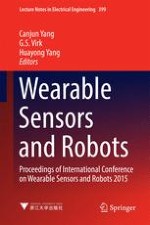2017 | OriginalPaper | Buchkapitel
An Emotion Recognition System Based on Physiological Signals Obtained by Wearable Sensors
verfasst von : Cheng He, Yun-jin Yao, Xue-song Ye
Erschienen in: Wearable Sensors and Robots
Verlag: Springer Singapore
Aktivieren Sie unsere intelligente Suche, um passende Fachinhalte oder Patente zu finden.
Wählen Sie Textabschnitte aus um mit Künstlicher Intelligenz passenden Patente zu finden. powered by
Markieren Sie Textabschnitte, um KI-gestützt weitere passende Inhalte zu finden. powered by
